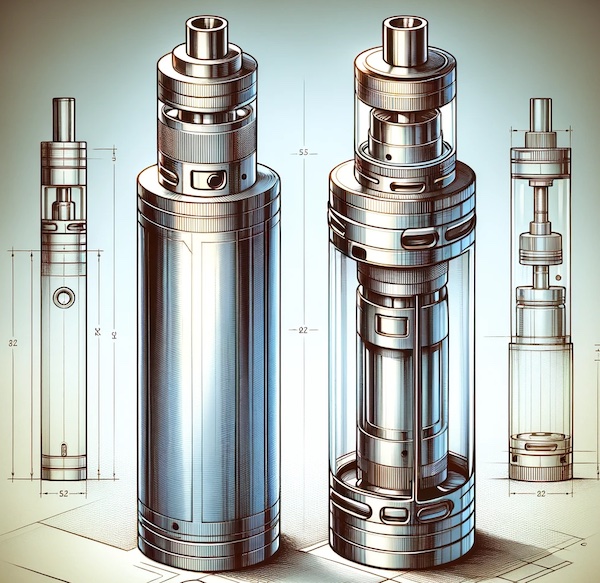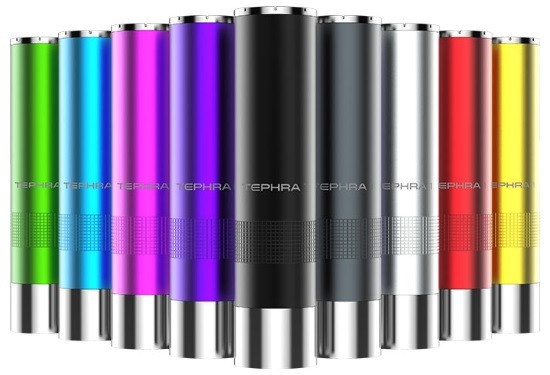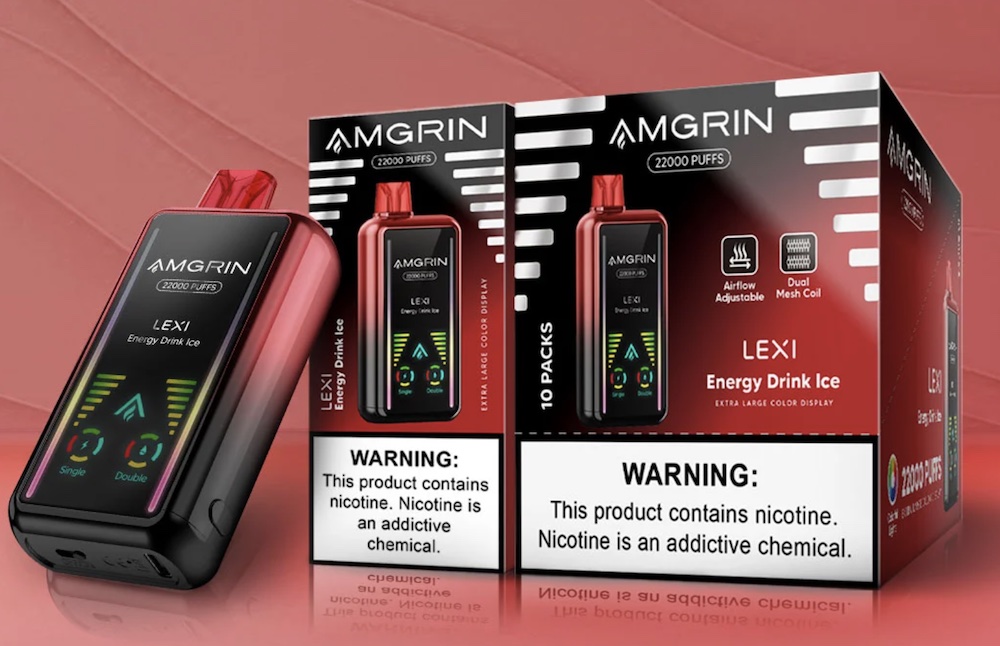If there’s one constant in the vaping industry, it’s change. The mechanical mod is a perfect case in point. Mechanical mods were once some of the most common vaping devices among expert vapers, but they’re almost unheard of today. As you’re about to learn, there are some pretty good reasons for that. I believe that most members of the vaping community would agree with me when I say that mechanical mods are a relic of vaping’s past and should probably stay there.
With that being said, there are still some vapers who use mech mods and swear by them — so even if it’s not the type of device that you’ll ultimately end up using, it’s still worthwhile to know what a mechanical mod is. Who knows — maybe it’s exactly the type of vape you’ve been looking for. Let’s learn more about what mechanical mods are along with their pros and cons.
Revolutionary New Disposable Vape
The new Lost Mary MT15000 lasts up to 15,000 puffs and features the incredible new Pulse Mode that allows you to get double the vapor on demand. A front display shows the device's e-liquid supply and battery life at a glance. Try the Lost Mary MT15000 Sample Pack, which includes three different flavors, for just $39.99. Take an additional 20% off with the coupon code VAPEGRL.
What is a Mechanical Mod?

A mechanical mod is a vaping device that has no electronic components of any kind. You complete the circuit manually by pressing a button that touches the battery’s negative pole.
A mechanical mod usually has a tube shape, much like that of a small flashlight. The tube holds a battery, which connects to a fire button — usually at the bottom — and atomizer threading at the top. Positioning the fire button at the bottom of a mechanical mod makes it possible to design a device with no electronic switches, and therefore less chance of failure from repeated use. When you push the button, a metal contact touches the bottom of the battery, completing the circuit and causing the battery to fire. When you release the button, a magnet or spring pushes it away.
Apart from the fire button, a mechanical mod lacks controls of any kind. It operates at just one voltage — the voltage of the battery — and the amount of vapor produced depends completely upon the attached tank or atomizer. With a low-resistance atomizer or tank, more wattage is generated and therefore more vapor is produced.
Since a mechanical mod has no electronic circuitry, it fires instantly when you press the button. The lack of power regulation, however, also means that a mechanical mod has no safety features.
The History of Mechanical Mods

The Volcano Pele is a US-made mechanical mod from the mid-2010s.
Mechanical mods are nothing new. They’ve been around at least since I switched to vaping in 2010, if not longer. The e-cigarettes typically sold at that time offered fairly poor battery life and vapor production compared to today’s more powerful vaping devices. While it was still possible for many smokers — myself included — to become full-time vapers using these early e-cigarettes, very heavy smokers sometimes found it difficult to get the nicotine they needed to fully calm their cravings.
The solution devised by early mod makers was to take the atomizer from a standard e-cigarette, attach it to a much larger battery for more consistent voltage and equip it with a switch for firing. Instead of disposable plastic cartridges that held very little e-liquid, mechanical mods typically used hollow “drip tips” that allowed the user to supply e-liquid to the atomizer directly from a bottle.
Benefits of Mechanical Mods
- Durability: Without complex electronics, mechanical mods have fewer components that can fail, making them incredibly durable and long-lasting. They are often considered more robust than their regulated counterparts.
- Simplicity: The straightforward design of mech mods means there are fewer parts that need maintenance or can break. This simplicity appeals to users who prefer a more hands-on vaping experience.
- Customization and Build Freedom: Mechanical mods are often designed specifically for use with rebuildable atomizers, which allow experienced vapers to build their own coils and experiment with different setups. This freedom to customize can lead to a highly personalized vaping experience, enabling users to achieve their desired vapor production and flavor intensity.
- Aesthetic Appeal: Many mech mods are beautifully crafted and can serve as a statement piece. They often feature unique designs, engravings, and materials, appealing to users who value aesthetics alongside performance.
Mechanical mods became more popular in the mid-2010s because the popularity of sub-ohm vaping had grown. While e-smokers once primarily used off-the-shelf atomizers based on the earliest e-cigarette designs, products had appeared by that time that allowed people to easily build atomizers to their own specifications.
Using a mechanical mod and building your own atomizer coils can save you an incredible amount of money over time. You can buy a great mechanical mod for under $50, while a power-regulated mod with all of the bells and whistles can set you back upwards of $100 or even more. Meanwhile, a spool of resistance wire and a package of cotton costing $20 or so in total will give you the supplies needed to build hundreds of coils. Over time, that’s a hardware cost of practically nothing — you’ll only need to worry about replenishing your supply of e-liquid.
Drawbacks of Mechanical Mods
- Safety Concerns: The lack of electronic safety features is a double-edged sword. Users must have a thorough understanding of Ohm’s law and battery safety to prevent dangerous situations, such as battery venting or explosions.
- Consistent Performance: As the battery depletes, the performance of a mechanical mod will diminish. Unlike regulated mods, which can maintain a consistent output until the battery needs recharging, mech mods require more frequent battery swaps for optimal performance.
- Not Beginner-Friendly: The need for a deep understanding of coil building, battery safety, and Ohm’s law makes mechanical mods less suitable for beginners. There is a steep learning curve to use them safely and effectively.
- Maintenance: Mechanical mods require regular cleaning and maintenance to ensure good electrical conductivity and performance. This can be time-consuming and requires a certain level of commitment.
So, we’ve established that mechanical mods cost less than power-regulated mods. We’ve also established that they can easily generate ample vapor when paired with sub-ohm tanks and rebuildable atomizers. Why, then, would anyone not want a mechanical mod?
For starters, there is the real concern of safety. A power-regulated mod comes programmed with a seemingly endless array of safety features. This means that the mod will refuse to work or display an error message if the resistance of the atomizer is dangerously low, the voltage of the battery is too low, the battery is reversed, the voltage or wattage settings are too high, the temperature of the device is too high — you get the idea.
The very definition of the term “mechanical mod” precludes any of these safety features. If you wire an atomizer with power demands that exceed the battery’s amperage capabilities, a mechanical mod will fire anyway when you press the button. A mechanical mod will let you drain a battery completely, making charging potentially unsafe. If the size of the tube is right, a mechanical mod will let you stack batteries to achieve a higher voltage. All of these conditions are unsafe and have been known to cause explosions and fires.
You can alleviate potential battery problems by installing a fuse in your mechanical mod. If a short circuit exists or too high an amperage load is generated, the fuse will trip, rendering the mod inoperable until the situation is rectified. However, it has to be said that the fuses of which I’m currently aware will trip at a maximum of 7 amps. This would mean that you’d be unable to use an atomizer with a resistance below 0.6 ohms, although that’s still quite low. The 7-amp fuse is a single-use fuse that costs $6.00. If it trips, you’ll need to replace it. Reusable fuses also exist, but they’ll trip more easily. Although a fuse helps to mitigate the safety issues associated with mechanical mods, they also limit the vapor production you can achieve.
Should I Buy a Mechanical Mod?
I would never suggest a mechanical mod to anyone, least of all to a new vaper. In my opinion, the safety risks greatly outweigh any potential benefit that a mechanical mod may have. A mechanical mod may have a sleek design and offer near-instant firing, but that’s true of today’s regulated mods as well.
One of the biggest reasons why mechanical mods became popular during the early years of vaping was because they offered performance that the other types of vapes in those days couldn’t match. Today, that’s no longer the case. A high-quality regulated mod paired with a mesh-coil tank will wipe the floor with a mechanical mod and a rebuildable atomizer every time. You can have performance and safety in the same device — there’s no need to choose one or the other.






0 Comments